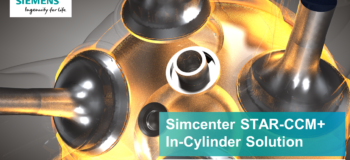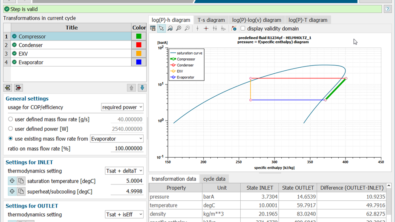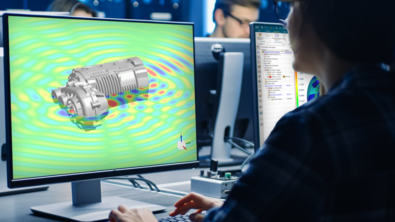From heavy equipment component design to system integration with Simcenter Amesim
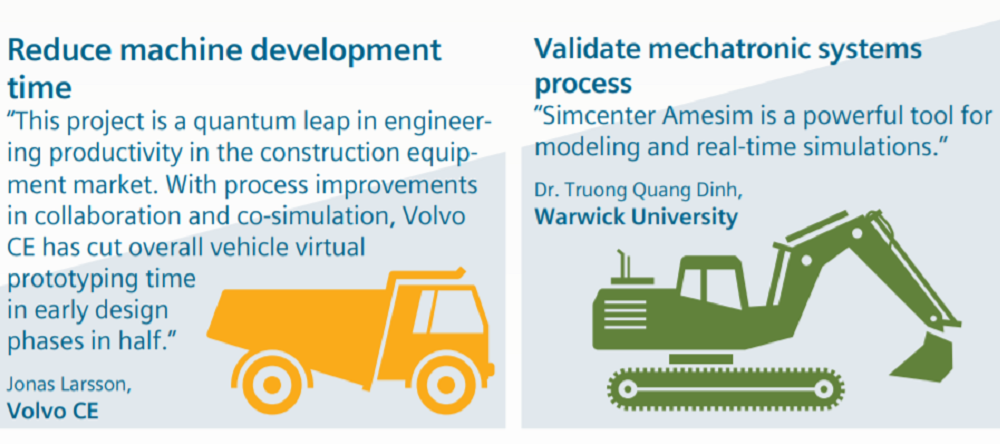
The strong footprint of Simcenter Amesim in heavy equipment companies
The Simcenter Amesim software (previously known as AMESim 95-2007 and LMS Imagine.Lab Amesim 2007-2017) capabilities have been constantly evolving to support the industry needs, such as the heavy equipment ones, for their product development which gets more and more digitalized. Industry requirements brought the Amesim development teams to focus on specific new features to release – whatever the application domain.
These development efforts have resulted in that approximately 80% of the construction machines sold over the world today are engineered somehow using Simcenter Amesim. This strong footprint in the heavy equipment industry dates back to the very beginning of the software development. The users started doing system simulations for component design mid of the ’90s. Before they extended to system integration mid of the 2000s. This, until the end of the 2010s where engineering teams aimed at developing more complex machines to meet the needs of more controlled and/or electrified equipment.
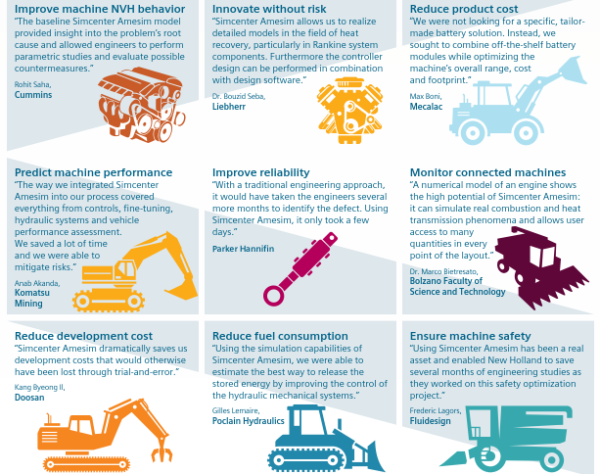
System simulation for components development
Hydraulic components design
Heavy equipment industries started to use system simulation for the development of hydraulic components such as pumps and valves. Mid of ’90s, a study requested by Tamrock (now part of Sandvik Mining) brought the company – Imagine at that time – to develop the Hydraulic Component Design library (aka HCD for the insiders). This enables to support the development of hydraulic hammer and drilling machines.
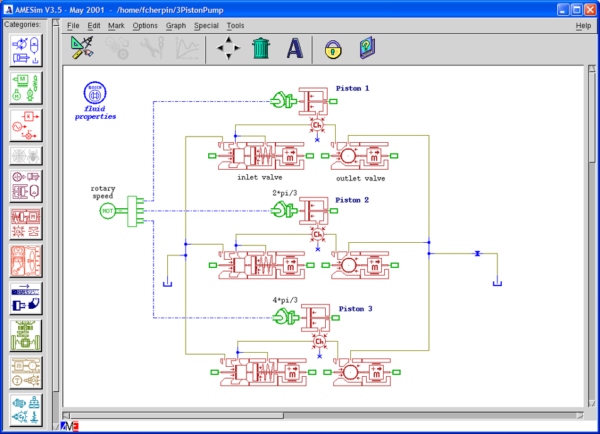
Later, the vane pump supplier company Rexroth initiated the creation of a customized components library. What they offered in a consolidated magazine to their own customers (the OEMs). Rapidly, Simcenter Amesim became a standard solution for a lot of hydraulic components suppliers such as Parker, Dana, Casappa, Poclain.
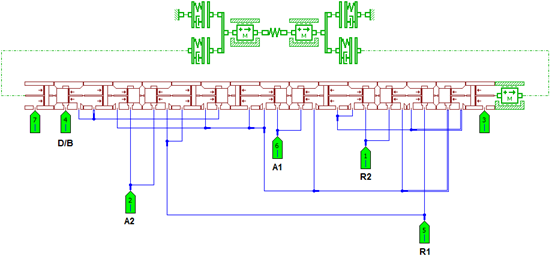
Mechanical systems
Nevertheless, the simulation of hydraulic component was not enough for the heavy equipment industrial players. They needed to go beyond by making the hydraulic and mechanical systems moving together. This required the capability to size such multibody systems. That’s how the Simcenter Amesim development team came with the 2D Mechanical (formerly named Planar Mechanical) and later 3D Mechanical libraries.
Consequently, by making all these capabilities available, many heavy equipment suppliers use Simcenter Amesim for component sizing at early stage of the development cycle.
What about integrating those systems together?
In parallel, manufacturers expressed a new need. They wanted to go even further in their design analysis by evaluating how much energy-efficient the complete machine is, once they proceed to systems integration. Simcenter Amesim supports system integration and energy management evaluation process that happens later in the development cycle.
Systems integration for energy management evaluation
Energy management studies for major equipment manufacturers
#1 Simulate wheel loader performance and energy consumption (mid 2000s)
One of the main European construction equipment manufacturers was looking for a way to simulate wheel loader performance and energy consumption. So, our Engineering Service team provided them with a study to model the complete machine. To proceed they used one side standard hydraulic library for actuators modeling. Also, the team worked with libraries usually used in the automotive industry, such as: IFP-Drive, Transmission, or even Thermal management for the cooling system. Thus, this very first machine energy management evaluation showcased how Simcenter Amesim can support heavy equipment OEMs on their system integration phase. Also, showing that using it enables them to anticipate issues during the test phase case by doing virtual analysis.
#2 – Cummins analyses a wheel loader model for transient response and architecture studies (2015)
Through that evaluation, the Cummins engineering department understood the complex and dynamic nature of wheel loaders operation on a realistic working cycle, using Simcenter Amesim. Also, the model included a mean value engine model, which considers turbocharger dynamics and engine governor controller. This enabled to predict realistic performance and fuel consumption over a mission profile.
#3 – CNH Italy evaluates the power distribution in the hydraulic remote system of agricultural tractors (late 2010)
In that paper, CNH Italy engineers explained that this study provided them with important insights about the system components’ power consumption. Especially when the reference machine is operating under different working conditions. Thus, they identified the less optimized components and conditions from the energy efficiency point of view. So, they could conclude on possible improvements in the system.
New capabilities under development
In parallel to those customer projects, the Simcenter Amesim development team keeps working to make new capabilities available for any users such as the digging force capability.
What’s next?
Thus, the use of Simcenter Amesim for system integration and machine energy management became a standard in the heavy equipment industry. However, companies, both OEMs & suppliers, still need to innovate in a very competitive environment. They have to think ahead about how their machine can be more efficient by reducing emissions reduction while improving safety and comfort. They can explore innovation areas such as electrification and optimized control systems or autonomous vehicle.
System simulation supports tomorrow’s heavy equipment industry innovations
Innovation area #1: control systems and autonomous machines
#1.1 Yanmar opted for virtual calibration using a hardware-in-the-loop
As previously mentioned, we can use Simcenter Amesim at each step of the V-cycle, by including the control systems verification and validation relying on different methodologies. Kown as model-in-the-loop, software-in-the-loop, and hardware-in-the-loop. Yanmar opted for virtual calibration using a hardware-in-the-loop approach for the investigation and the development of a new excavator. Firstly, they created and validated a full excavator model of existing equipment using test measurements. Secondly, they modeled the new excavator design and performed simulations on realistic operating conditions. They aim to estimate the positive impact of the new technologies introduced on fuel consumption. The last step was to optimize the calibration parameters of the controller. Yanmar engineering team succeeded in that project by integrating the Simcenter Amesim plant model into a real-time hardware-in-the-loop platform.
Thanks to that methodological approach they got a high-quality first prototype of the new excavator and shortened development time. Yanmar presented that methodology during the SAE 2014 Commercial Vehicle Congress.
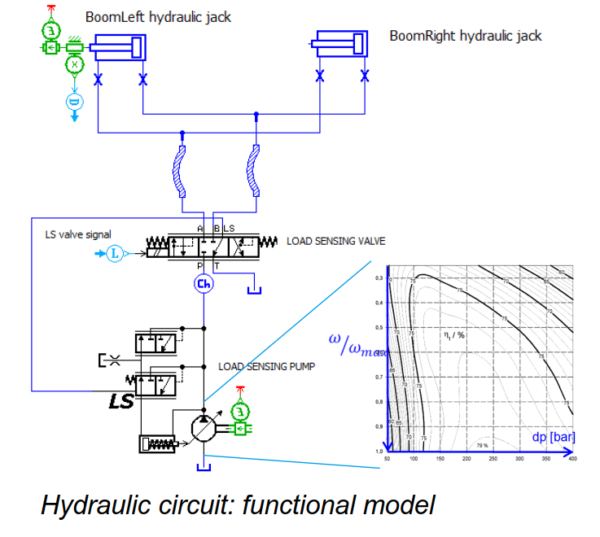
#1.2 Cérébrum-Ingénierie and its process-in-the-loop approach
Cérébrum-Ingénierie even went further as they used processor-in-the-loop analysis. The engineering team calibrate and fine-tune control logic in a shorter timeframe and more accurately than with the conventional HiL approach. They developed, using Simcenter Amesim, a universal serial bus (USB)/CAN interface. As a result, they could connect the computer that runs the plant model directly with the real electronic control units (ECUs) to transcribe the numerical signals. This approach does not require a conventional HiL test bench and happens much earlier in the development process.
#1.3 AMAZONE facilitates autonomous farming
When speaking about autonomous heavy equipment, we use to think more about autonomous operation than autonomous driving. Nevertheless, particularly in the agricultural field, OEMs are considering driverless machine and consequently, they need to think about its overall environment. In such a case, we can use Simcenter Amesim to model vehicle dynamics and as well as actuation systems. That’s what AMAZONE did to facilitate autonomous farming. Then, we can connect the model to the Simcenter Prescan environment and sensors models for performing full autonomous system simulation.
Innovation area #2: machine electrification
Electrification of passenger cars is at the automotive OEM’s agenda for a couple of years already. Whereas most of the heavy equipment industry players started focusing on that topic more recently. For instance, the growing number of 0-emissions areas in the cities pushes the construction machine manufacturers to consider it seriously. In such a context, system simulation is a key asset for exploring electrification. It enables to identify electrical system requirements, support the pre-sizing of the electric motor, power electronics, and battery. Finally using system simulation enables to address the validation of components development versus system requirements.
Simcenter Amesim supports that trend towards electrification and that’s how Mecalac engineering team has been able to create a first-time-right prototype of its electric wheeled excavator.
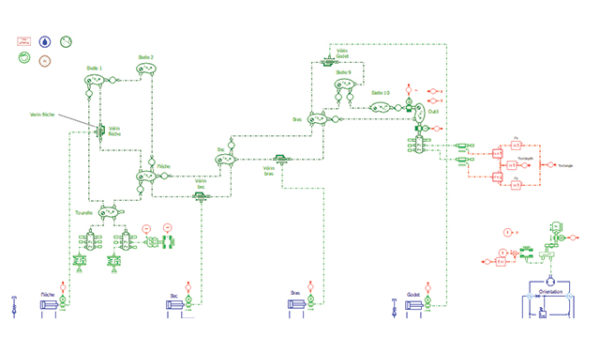
Simcenter Amesim celebrates 25 years of heavy equipment industry support
To conclude that historical review, let’s celebrate Simcenter Amesim 25 years. The Simcenter Amesim development team is more dedicated than ever to its Heavy Equipment customers to face new challenges and trends of tomorrow.
More links to open and browse the webapges:
